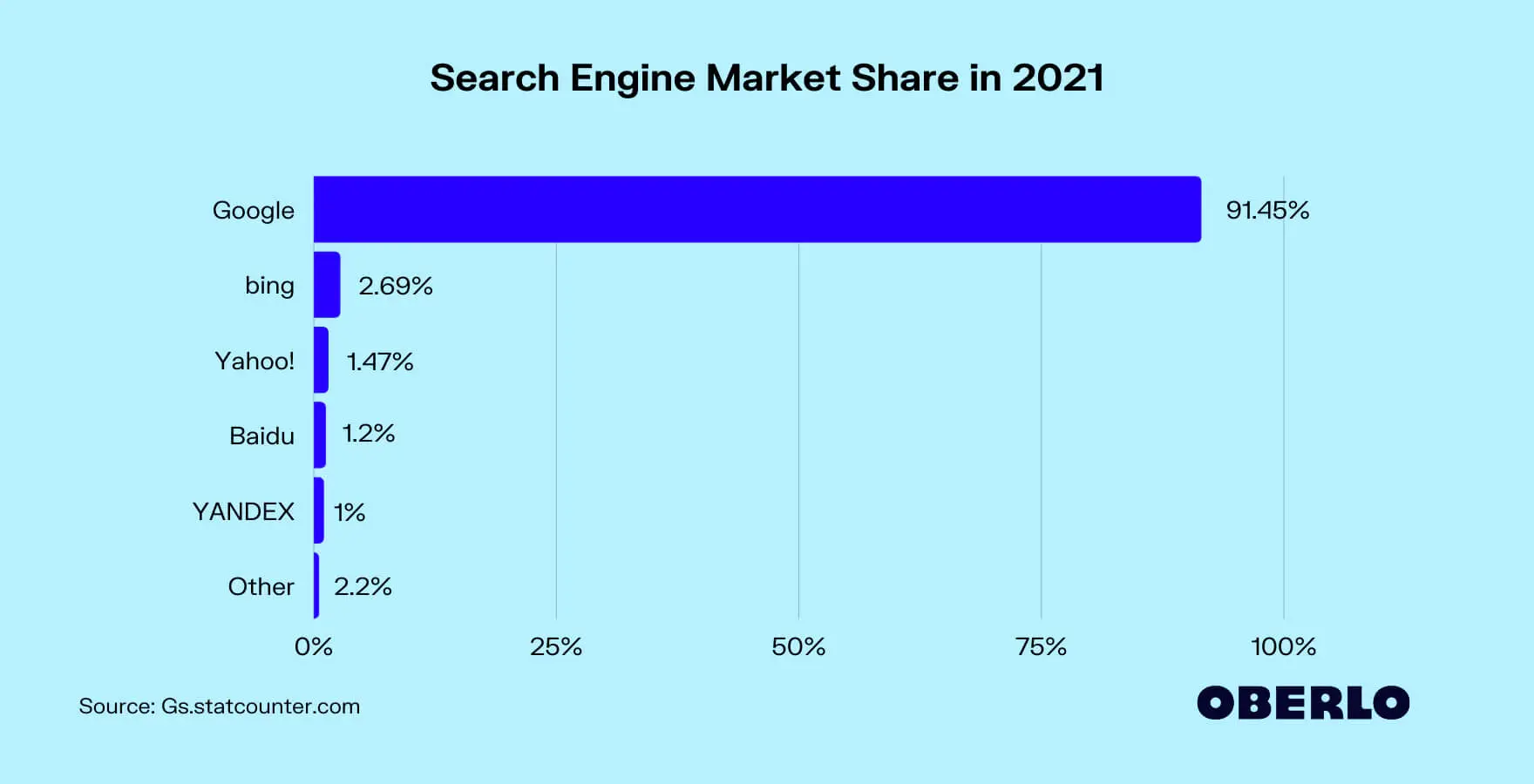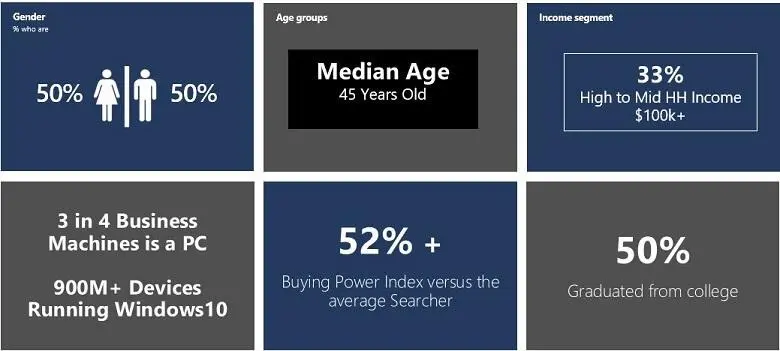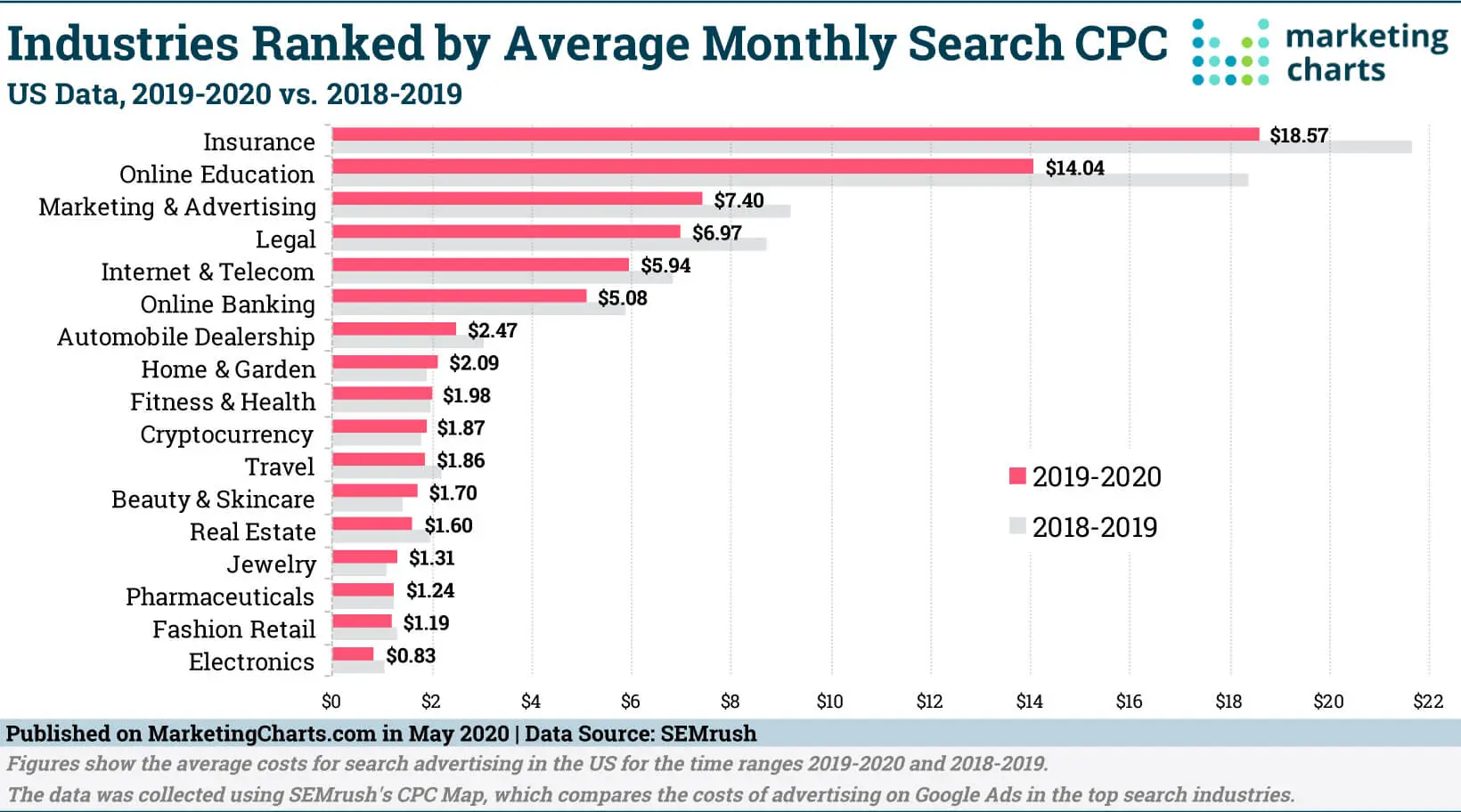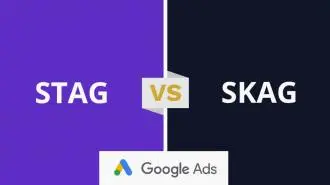Summary / TL;DR
The comparison of Google Ads and Bing Ads highlights key differences in reach, cost, targeting, and user demographics. Google Ads offers broader global reach, higher search volume, and more advanced targeting and analytics tools, but usually comes with higher competition and cost per click. Bing Ads, run by Microsoft, reaches a niche desktop-heavy audience across Bing, Yahoo, and AOL, offering lower CPCs, higher click-through rates, and unique features like LinkedIn profile targeting and timezone-level ad scheduling. While Google holds a dominant 91.38% search engine market share compared to Bing’s 2.69%, Bing provides better device targeting and transparency in traffic sources, making it a strong supplementary platform for advertisers.
More businesses are investing in online ads these days. Newcomers to digital advertising often face a big question: Is Google AdWords better than Microsoft Ads or vice versa?
Before getting into the thick of things, PPC advertising on Bing might not be familiar to all internet searchers. It is a search engine, like Google, but Bing is powered by Microsoft and determined to give Google strict competition.
Bing aims to shake up the digital search arena while going head-to-head with Google, a true industry powerhouse.

Bing certainly has ambition, and its unique ad formats set it apart in the PPC or pay-per-click segment.
A pay-per-click ad covers a wide range of strategies for search engine marketing (SEM). Advertisers pay for the number of clicks on each ad, and companies calculate the cost per click.
In pay-per-click advertising, the advertiser pays publishers each time a surfer clicks on an ad. In return, these shopping ads are added to the search engine’s databases.
So, when a user puts in a keyword that matches the content, they see Microsoft Bing’s shopping ads and Google shopping ads.
In the Bing vs Google Ads debate, Google Ads remains extremely popular, but Bing Ads has advantages.
Are you curious about which ad search engine platforms are better for you? We have a comprehensive guide and all the details to help you make your choice.
Let us show you the complete detailed comparison between the different Ad Networks and conclude which is better, Bing Ads vs Google Ads.
Want to receive updates? Sign up to our newsletter
Each time a new blog is posted, you’ll receive a notification, it’s really that simple.
How Are They Similar?
Google Ads and Bing Ads work on the same concept. Dynamic search ads are a powerful tool used by Bing and Google, assigning a cost per click. They help a product achieve quick conversions and address user search queries for short-term goals. Within the SERP, both Google and Bing have similar appearances.
They display URLs beneath ad headlines and have meta descriptions underneath them. Overall Placement, headlines, cost per click (CPC), and meta descriptions are nearly the same. There aren’t many differences in length, either.
In both instances, these PPC ads look a lot like Google search results, apart from a small label that identifies them as ads. Microsoft refers to these as shopping ads, boosting brand visibility.
How Are They Different?
The difference between Bing and Google isn’t as crystal apparent as you might have hoped. Google Ads has two different networks for advertisement purposes. They are the Search Network and Display Network.
The former consists of text ads that appear in the SERPs. Meanwhile, the latter covers visual and image display ads that appear on different websites within the Google display network on one platform, enhancing brand visibility with image ads all over the net.
In the Google AdWords vs Bing Ads comparison, Bing is owned by Microsoft, which also owns Bing, Yahoo and AOL, forming three search engines to showcase your ads. Thus, taking out a Bing ad means it is displayed on all these search engines, highlighting the differences between Google, Microsoft Ads, and MSN.
Thus, searchers can see your shopping ads on Bing, Yahoo, and AOL, in addition to previously established partner sites and social media platforms, reflecting the Bing advertising vs. Google AdWords debate.
Factors Of Comparison
We’ll look at some key differences between Bing and Google Ads. Understanding these can help you decide which one suits your needs best.
1. Reach
Since all advertisers want to reach their audiences, it is a critical component of ad campaigns. If people don’t know about your company, they will not likely buy your products or services. Thus, teams might miss out on returns on ad spend.
This tends to affect the overall profitability of a company.
Google Ads provides the lead here because its PPC ads capture a larger market share based on searches.

Through their display network, they provide access, allowing you to reach many extra users too. Bing PPC ads grab the edge of reaching a section of desktop users that Google can’t. However, Google dominates when it comes to overall reach.
2. Demography
Targeting the wrong people can break ad campaigns. Try using the targeting options provided by Bing and Google. While these are helpful, the existing demographics of both Bing and Google also offer a variety of targeting options that play a significant part.
A large section of Bing users are married, between thirty-five and fifty-four, and generally have a higher household income bracket, indicating a higher income level. Comparatively, those using Google are younger.

Due to Google’s massive user base, it is harder to pinpoint other demographics. However, suppose your target audience falls outside the parameters that Bing users mainly belong to. In that case, Google AdWords is the way to go for advertising through the Google Ads Bing network.
3. Proper Targeting
Ad targeting can also help to reach appropriate audiences successfully. In Google AdWords, a Google Ads campaign uses content and audience targeting. Content targeting offers options like placement, keywords, topics, and displaying expansion for searches.
Meanwhile, audience targeting includes affinity, demographics, in-market, similar audiences, custom intent, and remarketing material. The difference between a Google ad and a Bing ad campaign is evident in the latter’s targeting options.
With Bing and Google, you can access a range of targeting options, including LinkedIn profiles, in-market, keywords, custom audiences, location, time of day and day of the week, gender, age, remarketing, and device.
These help your ads position better on the search engine results page, highlighting the difference between Bing and how Google Ads reach different audiences.
Overall, even though Google AdWords and its platforms like YouTube offer more targeting options, Bing offers some distinct advantages.
If you’re advertising to individuals or companies, your campaign can effectively use LinkedIn profile targeting on both Bing Ads and Google Ads due to these platforms’ extensive features. This is especially helpful for marketers in search partner targeting for account-based marketing.
4. Targeting Through Keywords
Search marketing is essential regardless of whether you use Google AdWords or Bing Ads. Thus, you must understand what keywords match the types of searches on these advertising platforms.
For Google AdWords, you can access broad matches, phrase matches, broad match modifiers, exact matches, and negative keyword targeting. Bing allows broad, phrase, exact matches, and negative keywords.
There isn’t much difference between Google Ads and Bing Ads regarding keyword matching options. However, there is a marked contrast when it comes to search volume.
Google dominates here, so you can access smaller search volumes using Bing. This means fewer users and fewer scopes of reaching target audiences but lower competition.
5. Ad Copies
Several businesses start an ad campaign with text ads or search ads. Both Google and Bing have guidelines for these kinds of advertisements. The rules for a business are usually related to the number of characters in the headlines, display URLs for landing pages and descriptions.
Google AdWords has to follow up to 30 characters for headlines, accommodating responsive search ads, up to 90 characters for the descriptive sections, and 15 characters for display URLs that apply to all search ads.
Bing allows headlines and URLs but has an 80-character limit for descriptions. Thus, Google seems to offer more flexibility when it comes to advertisement copy.
6. Costing
Before launching a campaign, it is necessary to calculate the costs. Generally, there is a lower cost for Bing Ads than Google Ad campaigns. Of course, expenditure often determines the kind of returns you get.
Spending less on Bing Ads or Google Ads might lead to lower earnings. However, unqualified leads clicking on ads will not result in new clients or sales.
Your campaign should be designed as per your budget. But don’t make price the only factor; consider incorporating video ads for greater engagement. Check performances and returns to decide whether you need Bing Ads to account or stand to get a better conversion rate with Google Ads.
7. Average Cost Per Click
While deciding on ad budgets, go through the cost per click for Bing Ads and Google Ads within the search market share. Regarding paid search advertising, CPC stands for how much money you pay when someone clicks on your ad.
This is compared to their engagement with the ad and whether sales result.
Bing advertising has a slightly lower CPC than Google. But the engagement is lower, too. Thus, smaller ad campaigns might do better with Bing Ads, but lesser engagement will drive conversions on your landing page.
Once again, performance becomes as essential as cost while planning a campaign on any advertising platform.
8. Click-Through-Rate
Click Through Rate CTR or Click-Through-Rate calculates the percentage of how many users click on the ad vs how many of them see it.
Usually, Bing Ads has a higher CTR than Google Ads. However, to improve your click-through rate, you still need to have compelling content so that users decide to check out what you’re selling.
9. Conversion Rates
You can’t ignore the rate of conversions for advertisements. It describes the percentage of users who complete the ad’s goal, such as making a purchase, within different ad groups. This is compared to users who clicked on the ad but didn’t take any action, such as making a purchase.
Google has a higher conversion rate, especially considering how many advertisers use it.
10. Restrictions On Advertisements
Changes in regulations have affected what advertisers can show in the history of PPC. Google Ads has many more restrictions than Bing Ads.
With a Bing ad compared to Google, the former doesn’t allow or impose restrictive policies on alcohol, adult content, gambling, and games. It strictly protects rights and regulates copyrighted content, medicines and healthcare, political, trademarks, financial services, and legal content across various ad platforms.
On the other hand, Bing advertising restricts hate speech, dating, and political or religious content. The site also has policies against peer-to-peer sharing, violence, suffering, tax collection, sensitive advertisement, and user-generated content that isn’t regulated.
Though there are some overlaps, Google tends to be much stricter. They also don’t allow affiliate marketing for ads campaign on the search engine.
11. Kinds Of Ads
Google stays ahead of the curve by innovating new types of ads as part of its strategy to advertise effectively. They offer call-only ads that follow mobile device targeting.
This strategy enables users to click on the phone numbers displayed in these digital marketing plans and set up a direct call, affecting the ad placements. Bing still has a long way to go before catching up.
12. Tools Available
Google and Bing both offer several tools to help improve advertisements. The Keyword Planner Tool is one such example for learning more. It makes advertising so much easier since you can look up the search volume and research all kinds of keywords to forecast trends in the future.
Apps like the editor allow you to create ads faster and upload them. You can download and use them offline. Bing has a keyword planner but isn’t as advanced as Google’s in the search market.
13. Search Engine Market Share
Market share plays a huge role in determining how popular specific search engines are. The numbers show that Google reigns over the search engine market, having captured 91.38%, while Bing search ads hold around 2.69%. While it still comes second, there is a significant gap, but Bing offers a great alternative.
Thus, considering the average CPC, advertisers often prefer Google Ads over Bing Ads for online search ad placements.
Cons Of Google And Bing Ads
You should know that each search engine ad, formerly known as AdWords, has its own disadvantages. Google witnesses high competition with high-value keywords.
This increases PPC. Users must use specific keywords since broad words might attract unwanted searches and hamper advertising attempts. Again, as Bing has a very loyal user base, using Google Ads makes it impossible to reach them.

Image Source: Marketing Charts
On the other hand, Bing, too, has its downsides. Trillions of people use Google; an informed advertising strategy is essential for choosing who wouldn’t prefer Bing.
As its market share is significantly smaller, Bing Ads will not likely reach international audiences, and the demography is much older.
Special Benefits Of Bing
Despite the detailed comparison, you should be aware of advertisers’ particular advantages when using Bing.
1. Importing Google Ads Campaigns
Once you’ve created a Bing Ads account, you can import your campaigns directly from Google Search ads, allowing you to leverage Microsoft Ads.
Instead of creating everything from scratch, you can run your campaign quickly.
It’s user-friendly to import Google Ads to Bing using their intuitive Ads editor software.
2. Increase In Granular Control
Bing search ads offer greater granular targeting at ad group levels.
While Google lets you set networks, languages, locations, and even ad rotation, Bing Ads allows adjustments beyond the campaign level, showcasing their expertise. Moreover, you can tailor Bing Ads to different timezones, which Google Ads doesn’t allow.
3. Better Device Targeting
Bing has Google Ads beaten when it comes to specific targeting. For example, you can tailor ads based on device types and operating systems.
With Microsoft Advertising, advertisers can display campaign ads based on device types; for instance, ads meant for mobile phones cannot be displayed on desktops.
4. Site link Extensions
Much like Google Ads, Ads Bing offers advertisers an opportunity to add information that will persuade users to click through.
Extra links on a network, known as ad extensions, can consist of demos and free trials. But, these ads are much larger than other examples on a SERP list.
5. Improved Transparency
This network allows greater transparency by disclosing details about its search partner. Advertisers know where search traffic is coming from and how their ad performance is affected. Details on metrics, conversions, and impressions become readily available.
6. Better Engagement And Conversion Rates
Bing takes users to post-click landing pages once they hit the PPC ads, enhancing conversion.
This often leads to higher conversion rates. With the network’s capability to show both Google and Microsoft ads, it frequently attracts new clients.
7. Bing Ads Certification
Bing has a certification programme similar to Google Ads certification. An accreditation test follows a training course, but the badge helps land new clients.
Using Bing Ads with the badge has some perks. You’re recognised as an expert and placed in the professional membership directory.
So, what should you choose for Bing Ads vs Google Ads?
After comparing Google Ads and Bing Ads, it becomes clear that the best method is to leverage both. Google Ads takes the cake with its digital advertisement, while Bing complements a PPC strategy excellently and fills gaps in its online presence.

Image Source: Get Community
If Microsoft Bing Ads accompanies Google Ads, you can reach new territories. However, in the context of Bing vs. Google, while Google search might have a higher volume, Bing has a lower average cost per click, operates within its segment of the market share, has less competition, and is better positioned.
Pick the option that best meets your needs, and don’t hesitate to get in touch if you have any questions.
Until then, goodbye.





